Six of the year’s most striking images

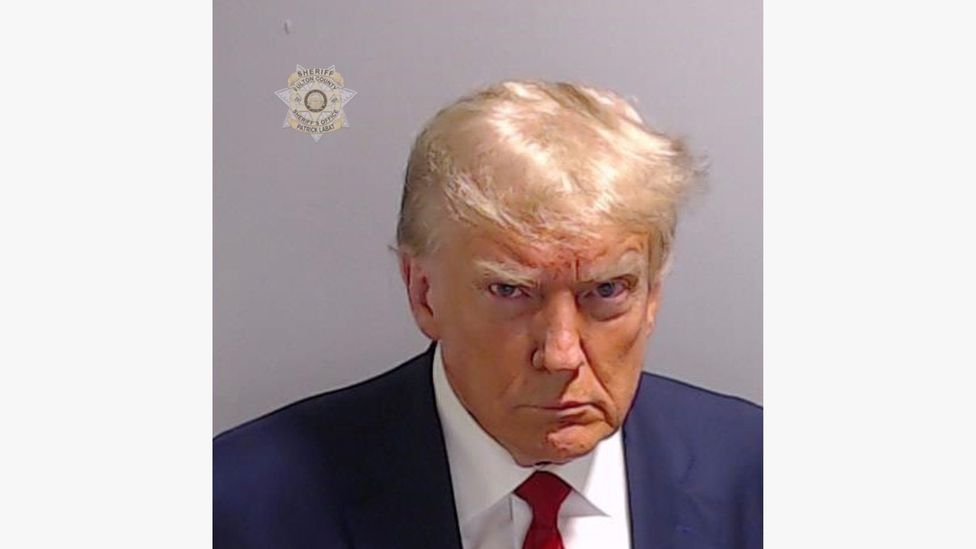
The mugshot of Donald Trump, taken in Atlanta on 24 August 2023 (Credit: Getty Images)
1. Trump mugshot
It was the mugshot heard around the world. The booking photo of Donald Trump, taken at an Atlanta jail after the former US president was indicted for conspiring to overturn the results of the 2020 election in Georgia, was released moments after it was taken on 24 August. The portrait’s penetrating stare instantly seared itself into cultural consciousness, and Trump made the most of it, with his campaign website selling mugshot-branded mugs, t-shirts and drink coolers within hours. The mugshot in the US has a mystique all its own and an arresting allure that Andy Warhol seized upon almost 60 years ago in a series of 13 super-sized portraits he fashioned from the New York Police Department’s list of most-wanted individuals, which the Pop Artist provocatively plastered to the side of a pavilion in the New York State Fair in 1964, causing a scandal. It was quickly painted over.
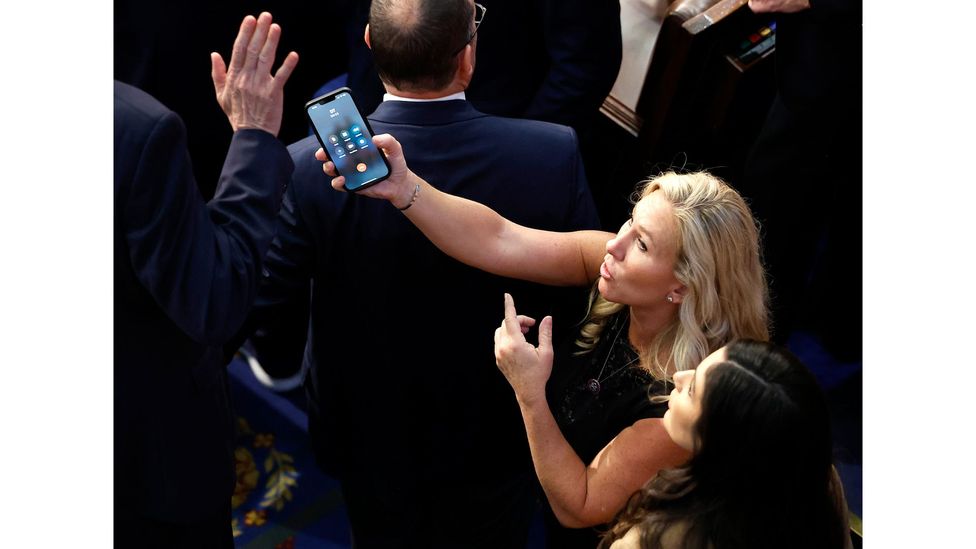
Marjorie Taylor Greene holds up a phone with Donald Trump on hold (Credit: Getty Images)
2. Congress tableau
About shadows they were never wrong, the Old Masters. If the 16th-Century Italian painter Caravaggio were alive today, perhaps he would have found intriguing the conspiracy of darkness and light in a photo caught on the floor of the US House of Representatives in January. Here, the controversial Republican congresswoman and ally of former President Trump, Marjorie Taylor Greene, attempts to persuade a colleague, Matt Rosendale from Montana, to speak to Trump, whom she has on hold on her smartphone. The gadget’s glow, Greene’s outstretched arm, Rodendale’s raised hand in refusal and rumples of dark fabric that frame the scene echo the contours and contrasts of Caravaggio’s own chiaroscuro canvases.

2023 World Robot Conference Held in Beijing (Credit: Getty Images)
3. Robot demonstration
Images of robots gesticulating fluently and pulling convincing human expressions at the annual World Robot Conference at the Beijing Etrong International Exhibition and Convention Center this summer were truly astonishing. The uncanny sight of female robots appearing to mimic the movements of a male robot “master”, dressed in red, shows how deeply hardwired gender roles are, even when gender itself is technically, and technologically, meaningless. A fresco by the 19th-Century Golden Age Danish painter Constantin Hansen, which depicts a clay figure fashioned by the Greek God of Fire, Prometheus, remaining inert until the red-robed deity Athena bestows life on it, offers an intriguing contrast across centuries.
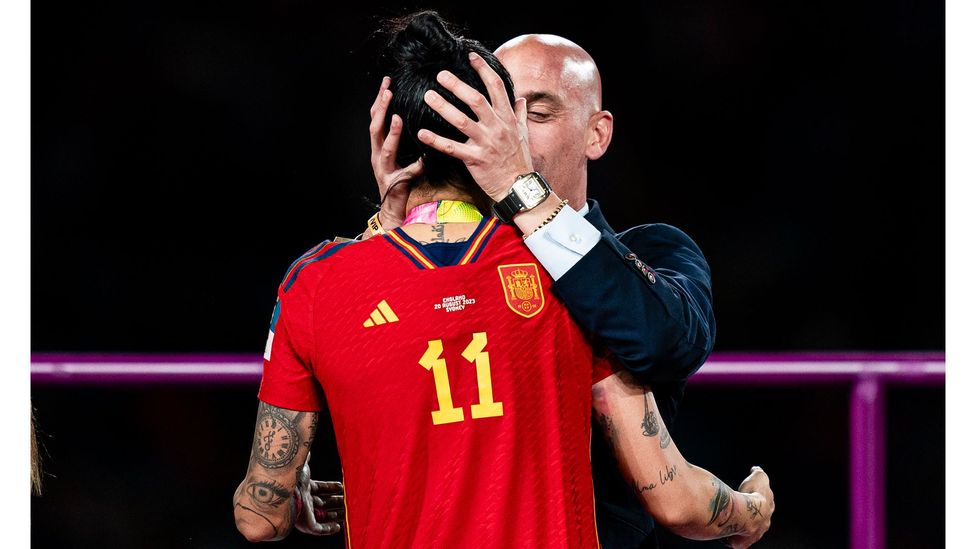
President of the Spanish Football Federation Luis Rubiales kisses Jennifer Hermoso of Spain during the medal ceremony of the Women’s World Cup Final match (Credit: Getty Images)
4. Rubiales kiss
“A kiss,” the Swedish actress Ingrid Bergman once said, “is a lovely trick designed by nature to stop speech when words become superfluous”. If Luis Rubiales, the head of the Spanish football federation, believed that speech would stop, and “words” would “become superfluous” when he kissed midfielder Jennifer Hermoso on the lips in the moments after her team clinched Spain’s first Women’s World Cup title on 20 August, he was sorely mistaken. While Rubiales has denied allegations of coercion filed by Hermoso, she insisted on social media that photos of him kissing her documented an “act without any consent on my part”. It prompts the question: how many captured kisses in cultural history are really on the level? We’re looking at Gustav Klimt, and that clench in his 1907/8 painting The Kiss.
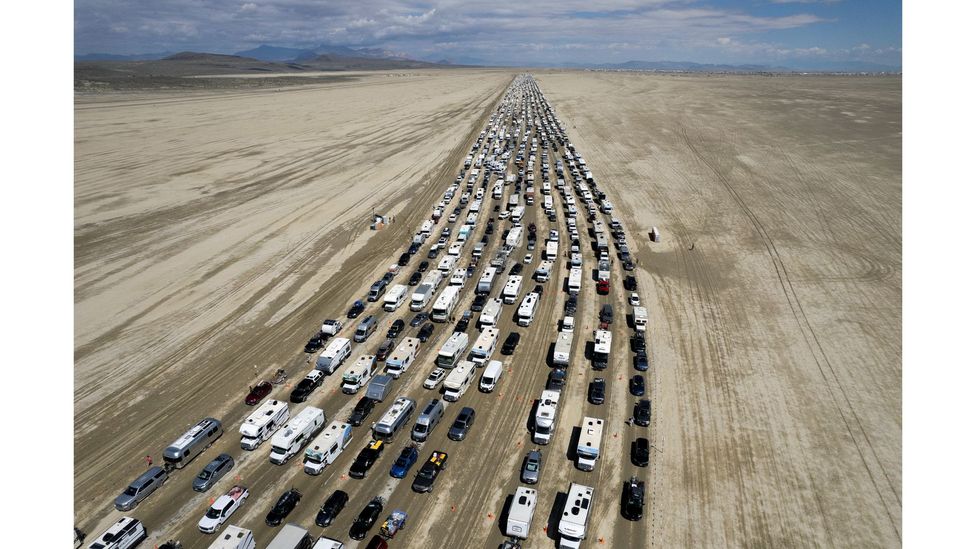
Cars trying to leave the Burning Man festival (Credit: Matt Mills McKnight/Reuters)
5. Burning Man
The claustrophobic sight of automobiles stuck in a lengthy and stressful traffic jam in Nevada’s Black Rock Desert following the Burning Man cultural gathering this summer were at odds with the carefree ethos of the week-long retreat devoted to art and self-expression. Heavy rains and flooding just prior to the close of the event forced road closures that caused the epic standstill. Though few who found themselves stranded in the static snake of cars might have thought so at the time, photos of the bottleneck from above captured participants collectively creating a massive momentary sculpture in the sand that dwarfed the famous frozen parade of nose-diving sedans in Amarillo Texas, known as Cadillac Ranch, created in 1974. Now, who wouldn’t want to be part of that?
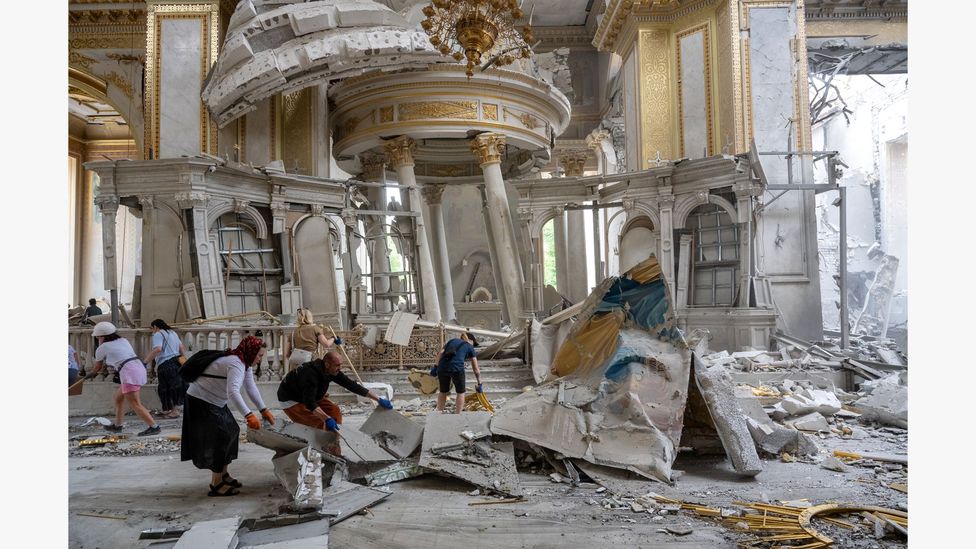
The Holy Transfiguration Cathedral in central Odessa, Ukraine, after a Russian missile strike (Credit: Getty Images)
6. Ukrainian cathedral missile strike
Some photos shake us. Others are unshakable. Take the photo of parishioners clearing rubble from the inside of the historic Holy Transfiguration Cathedral in central Odessa, Ukraine, following a Russian missile strike on the sacred structure in July. Although the blast is past, the static image manages to appear, with its teetering columns and swinging chandelier, in ceaseless sway, as if the trauma and tragedy it documents is forever unfolding. At the same time, the photo seems to exude an eerie calm, as if the shaken space were utterly inviolable. In the 1630s, a French Baroque painter by the name of François de Nomé uncannily captured something of the same affecting effect in his curiously kinetic painting An Explosion in a Church (recently renamed King Asa of Judah Destroying the Idols). The work’s ability to suspend in equilibrium the stricken structure’s violent demolition (on the right) and a semblance of its unassailable serenity (on the left), seems cut from the same imperturbable canvas as the recent photo from Odessa.
If you liked this story, sign up for the weekly bbc.com features newsletter, called The Essential List. A handpicked selection of stories from BBC Future, Culture, Worklife and Travel, delivered to your inbox every Friday.
If you would like to comment on this story or anything else you have seen on BBC Culture, head over to our Facebook page or message us on Twitter.








